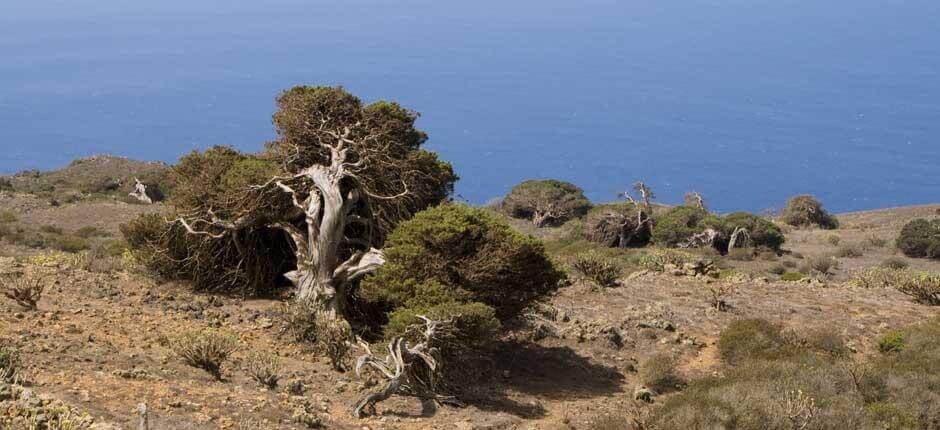

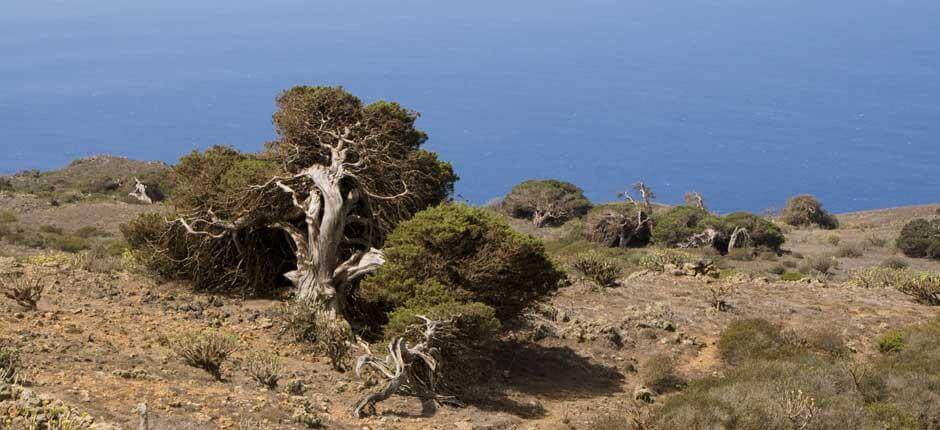
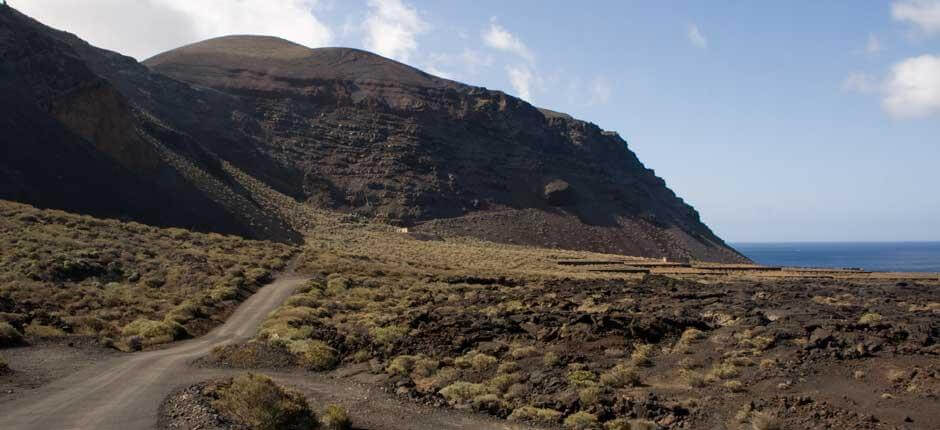

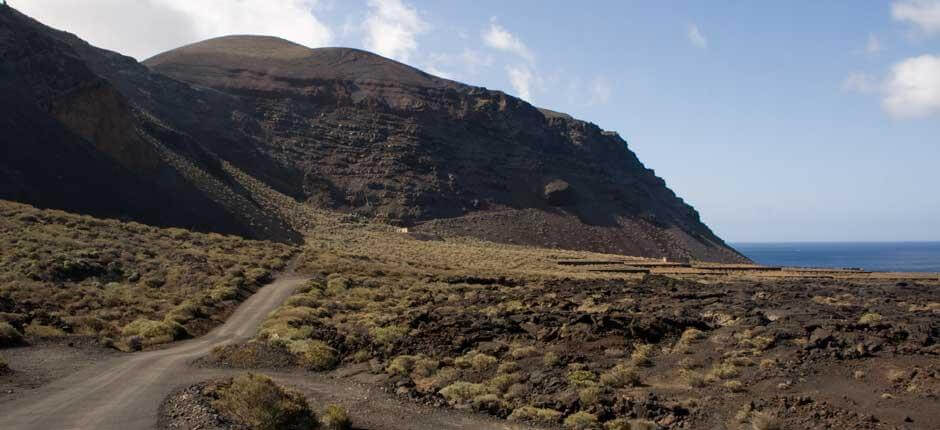
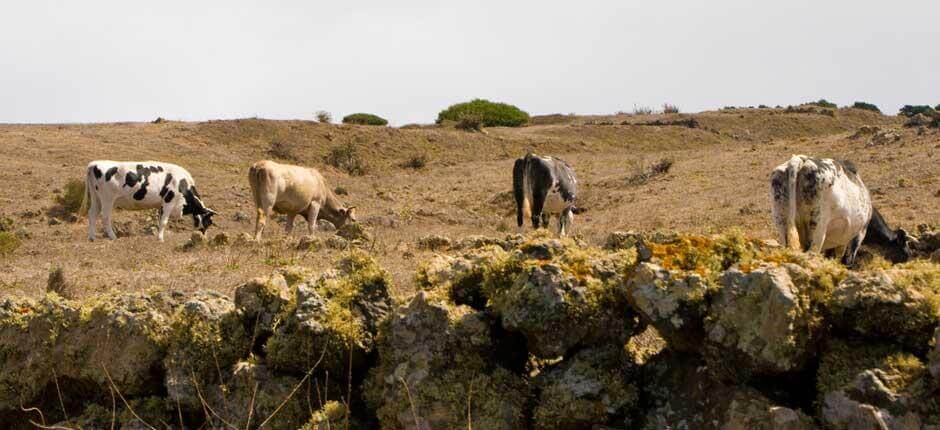

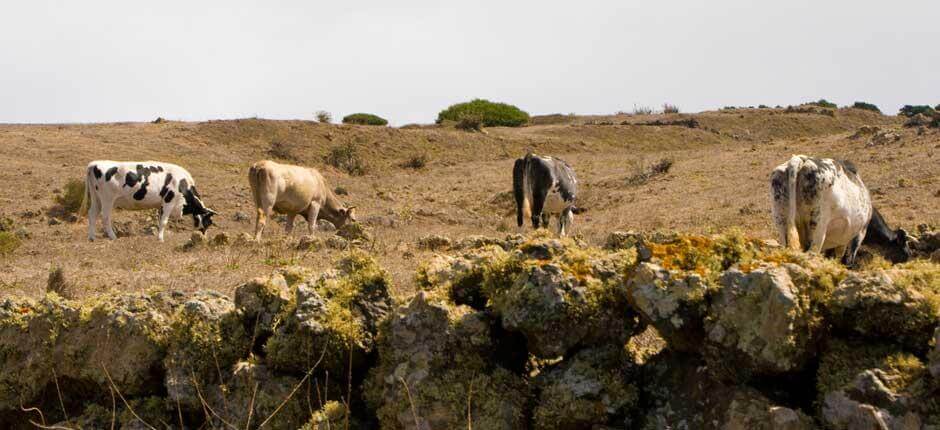
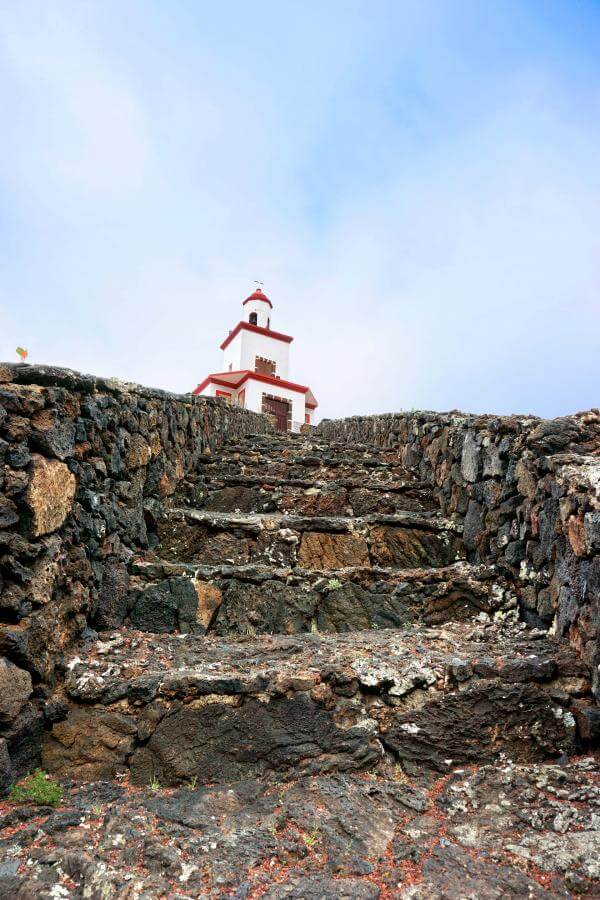

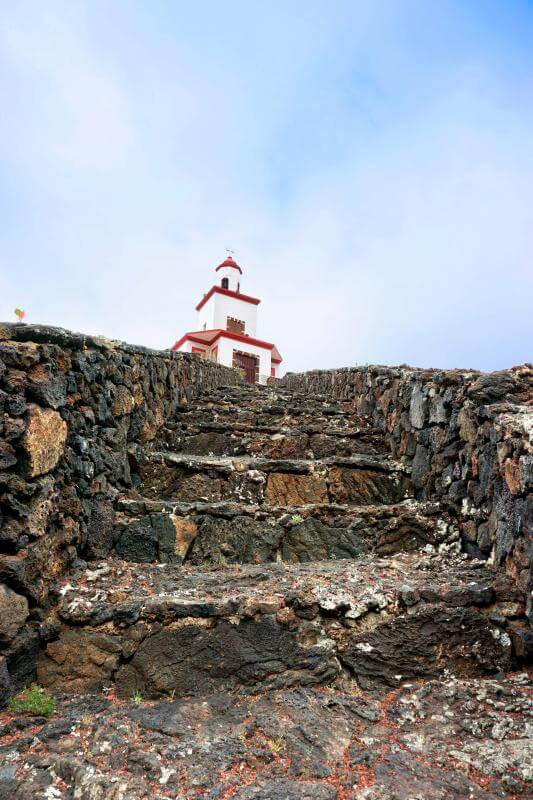
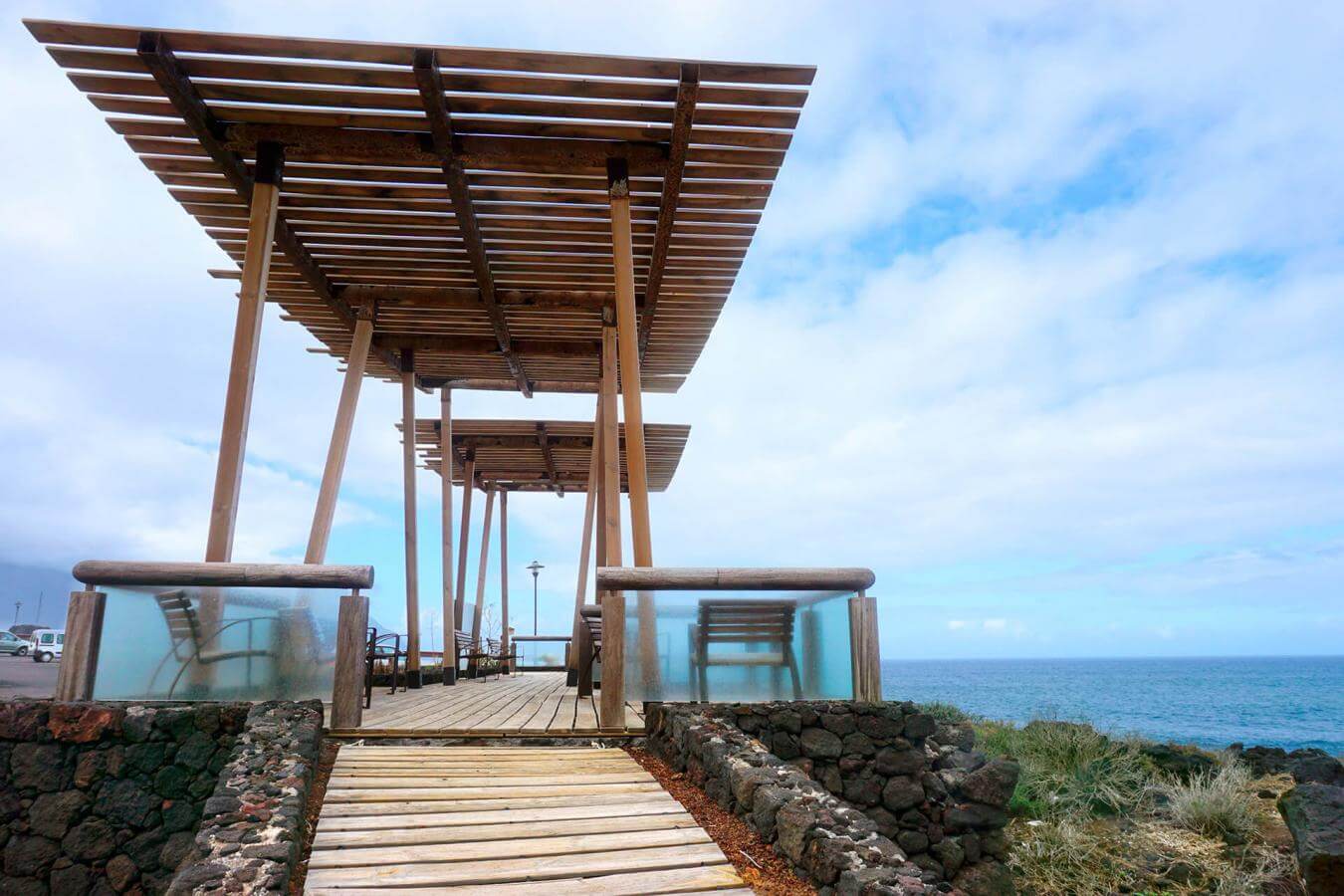

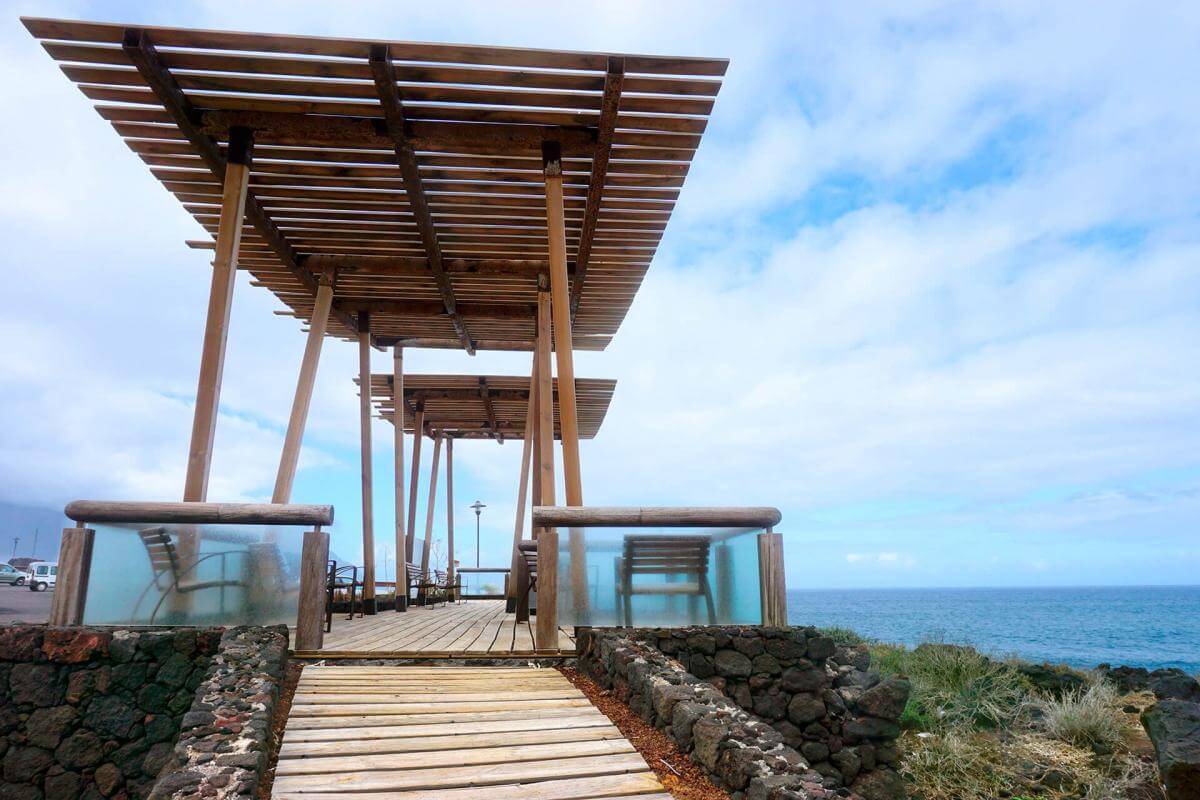
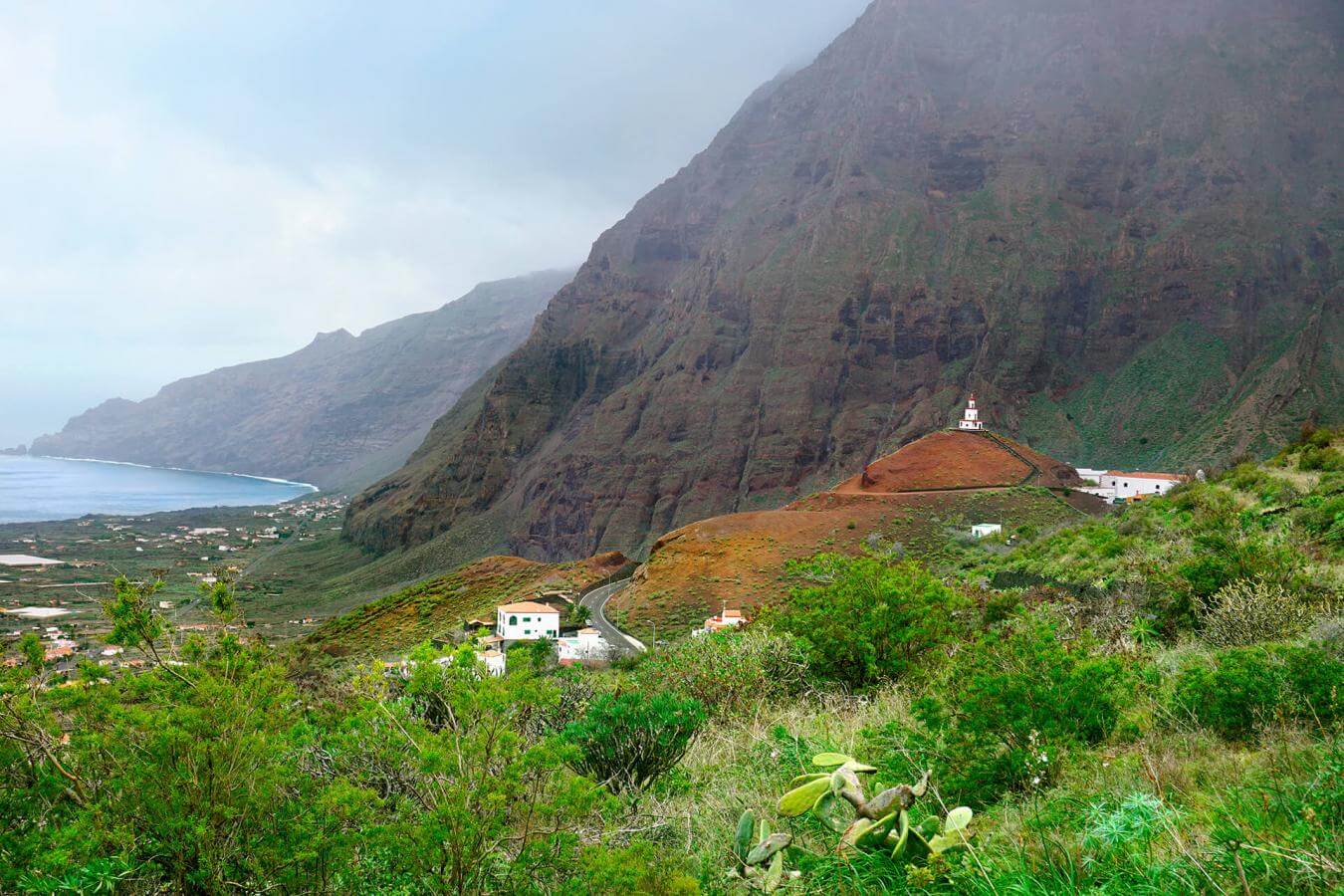

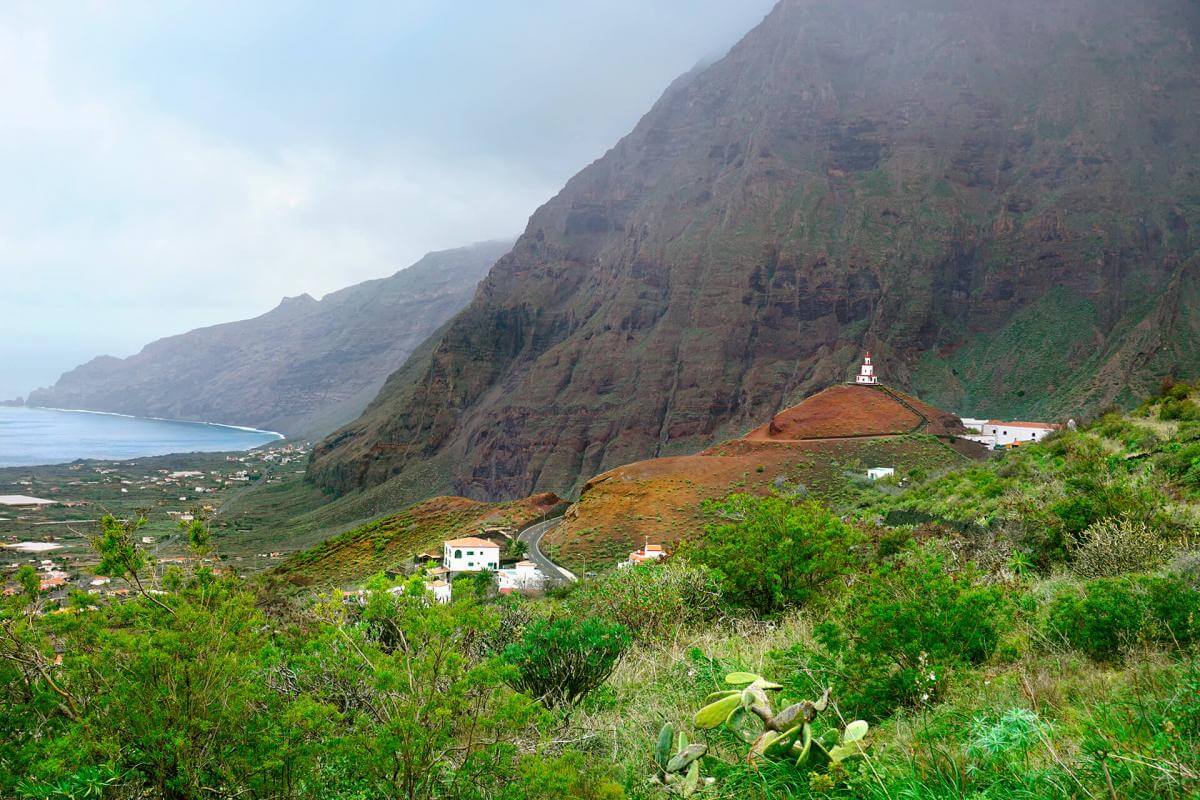
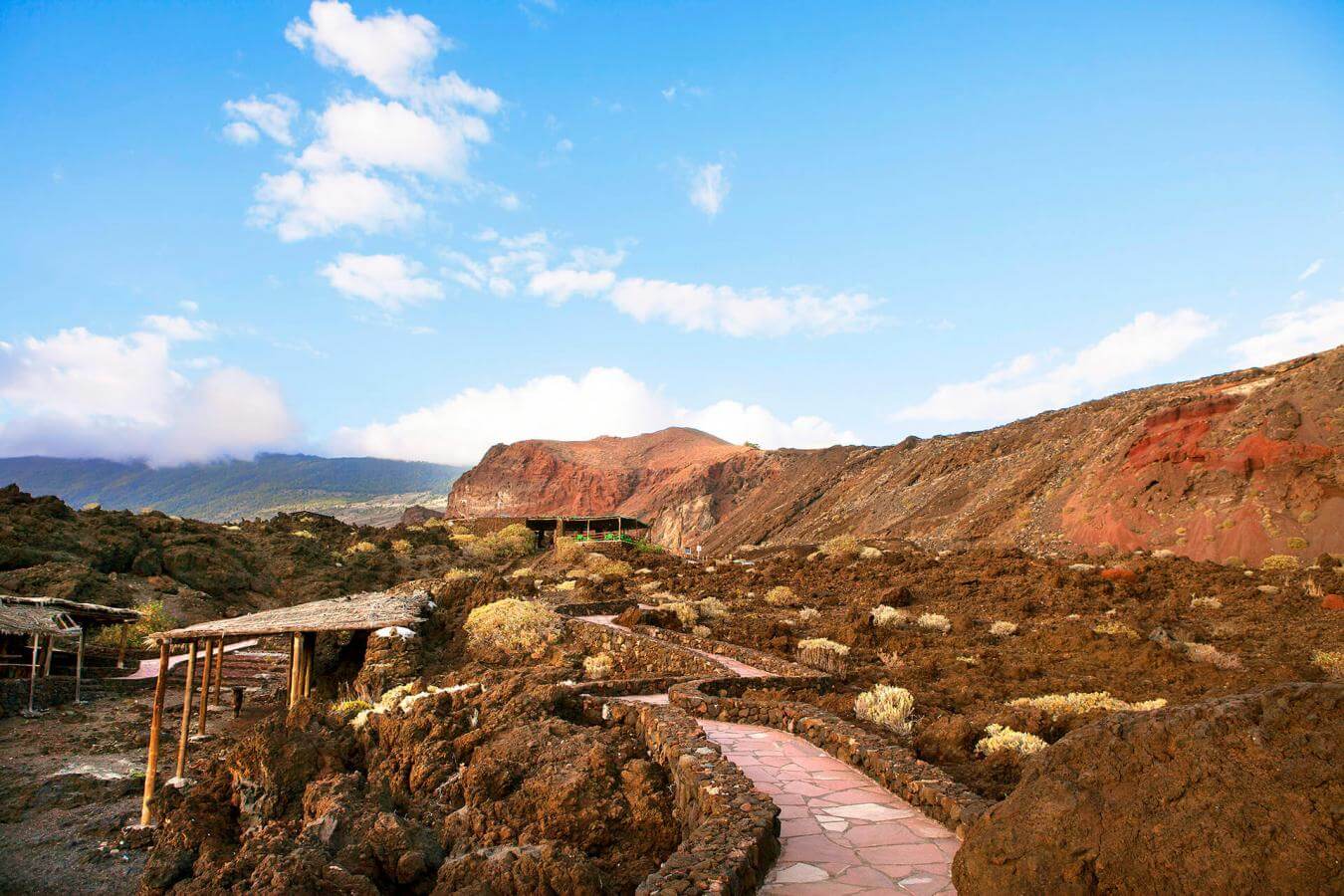

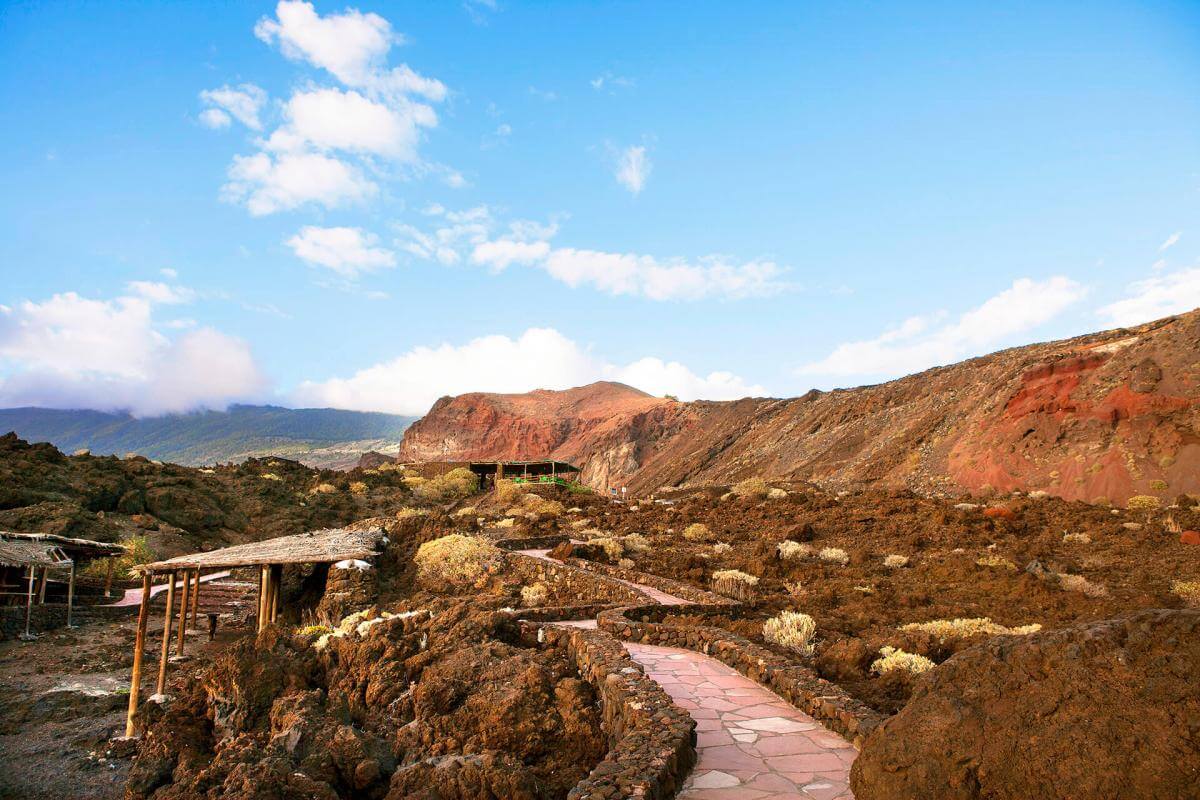
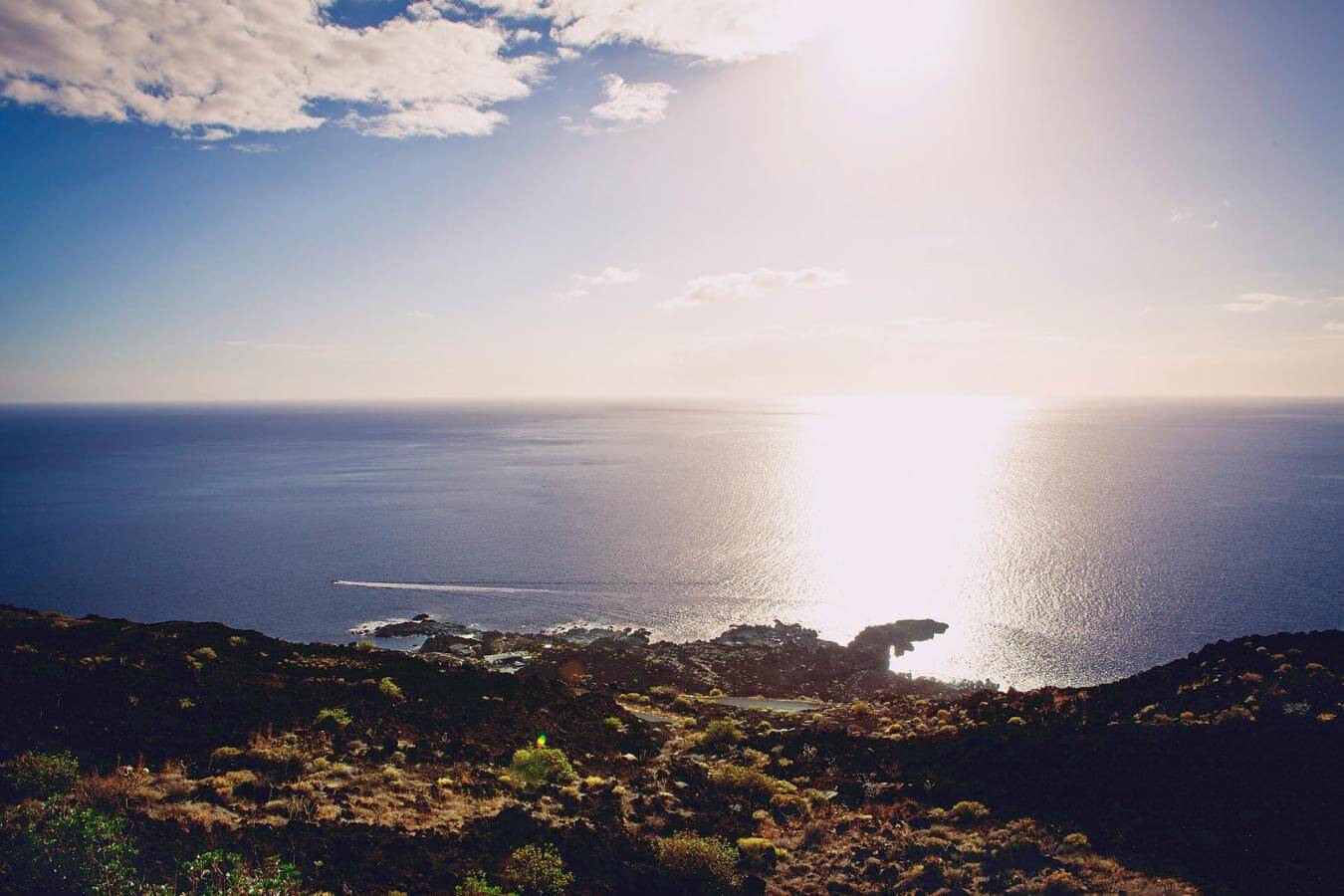

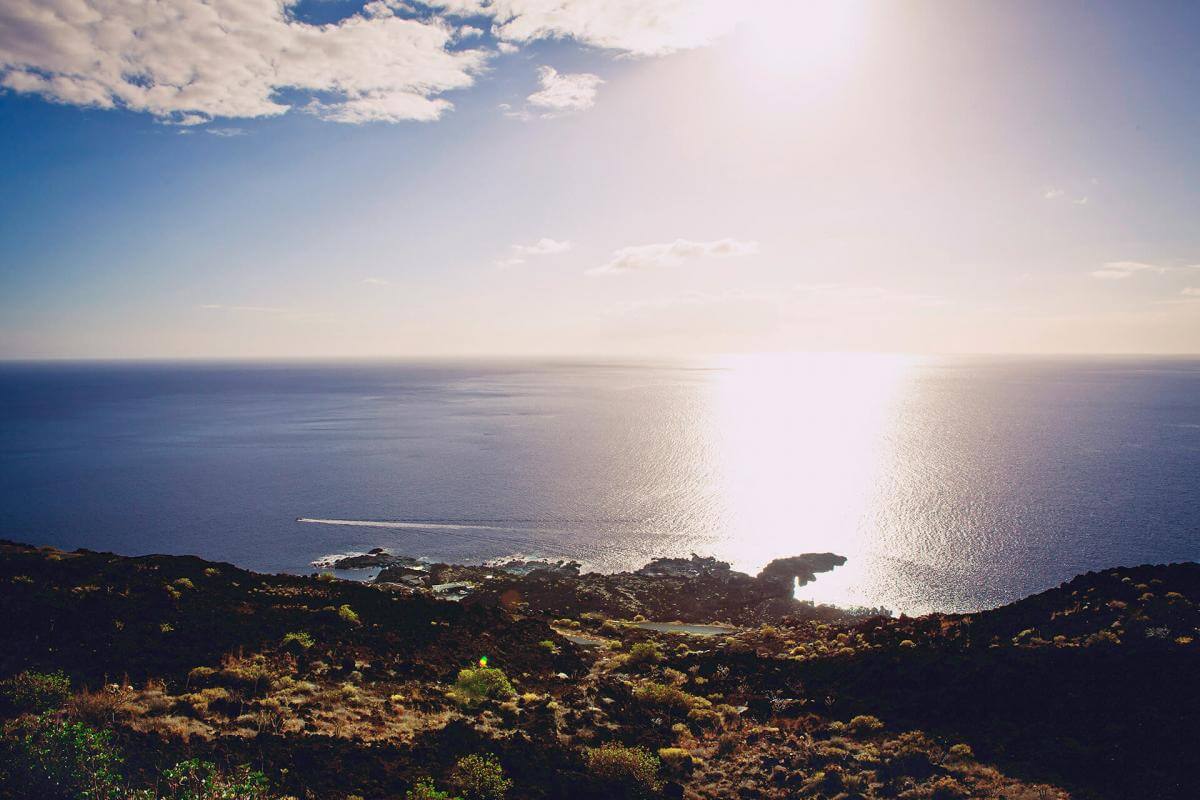
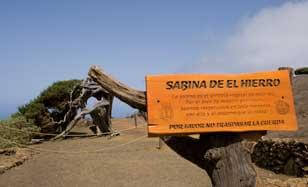
El Hierro’s famous twisted juniper tree
In the extreme west of El Hierro there is a wood of centuries-old trees whose incredible ability to adapt to the elements will leave you in complete awe. This is the famous juniper wood known as El Sabinar; an open forest of indigenous juniper trees with twisted, leaning trunks that are a result of their never-ending battle with the wind. This natural jewel in El Hierro's crown is found in a communal grassland, with cows and sheep grazing nearby, and not too far from the Nuestra Señora de los Reyes sanctuary.
After leaving your car in the parking area, visitors will soon see that one tree in particular grabs their attention – the 'Sabina de El Hierro', a magnificent example that looks very much like a dancer arching her back and letting her hair fall to the ground. Its unmistakable shape has made this tree one of the symbols of the island, and also of the beauty and ability to adapt of the people that live in the Frontera Rural Park and the rest of El Hierro.
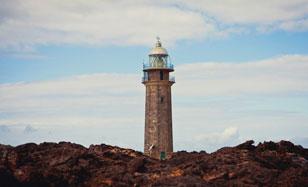
The former site of the prime meridian
The westernmost point of the Canary Islands and of the island of El Hierro is a place marked by red lava flows and volcanic craters in the middle of which sits a simple lighthouse painted green and white. This is the Orchilla Lighthouse, which, for 250 years before it was moved to Greenwich, used to mark the Prime Meridian point. Its light was also the first indication of European land for the explorers returning from the New World.
Beside the lighthouse you can see the erratic lava flows, volcanic tubes and enormous tabaiba plants in the shape of a candelabra. The more curious visitor will want to see the monument to the prime meridian and request a certificate of their visit from the island’s tourism board. After walking over the ancient meridian you can take the nearby HI-500 road towards Frontera and visit El Verodal; an exotic beach of red volcanic gravel.
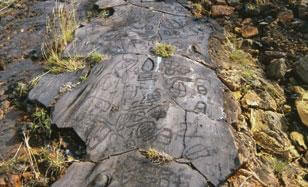
A visitor centre about the Bimbaches
El Julán is a vast mountainside of lava flows that slope down to the Sea of Calm (Mar de la Calmas), in the south of El Hierro. Here, on these slopes, is where the best cave drawings by the Bimbache tribes, the ancient inhabitants of the island, are hidden. Far removed from urban life, here visitors cannot see a single building or road; it’s as if nature had swallowed up every last trace of civilisation.
However, camouflaged along a side road of the HI-400 you’ll find El Julán Cultural Park information centre. The economic, cultural and political importance this site held for the ancient inhabitants is explained in the exhibition rooms, and the centre’s expert staff guide visitors along eight-kilometre routes that lead to the drawings at Los Letreros and Los Números, to a “tagoror” – an ancient assembly point of the Bimbaches – and to many other places of interest.
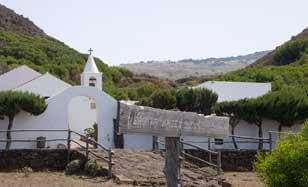
Temple of El Hierro’s patron saint in La Dehesa
The most adored figure for the small population of El Hierro is that of its patron saint, the Virgen de los Reyes (Virgin of the Kings). This devotion to Mary receives its title from the Día de Reyes (Kings’ Day) or Epiphany, on January 6th, since that was the date in 1546 when the inhabitants of El Hierro were given a small wooden figurine of the Virgin Mary. It was a gift from a boat sailing to America, which had been rescued by the island’s inhabitants.
The figure of the Virgin is kept in the island sanctuary Nuestra Señora de los Reyes (Our Lady of The Kings). This quiet, modest temple is located between the rolling heather hills in La Dehesa, a communal grazing area 600 metres above sea level in the western part of the island and in the Frontera Rural Park. A stop here, en route to the twisted juniper trees, or to the Bascos viewpoint, will revive your soul.
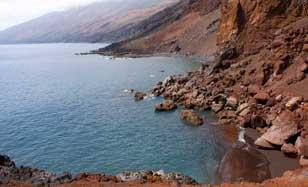
Scuba diving and fresh fish in the south of El Hierro
Just in front of the southern coast of Frontera Rural Park you will find a marine sanctuary teeming with life. The La Restinga-Mar de Las Calmas Marine Reserve is located at the southernmost tip of El Hierro, in a large and tranquil bay. Its 750 hectares of intense blue waters are a paradise for divers, underwater photographers and traditional fishermen of the area.
The fleet of fishing boats that work the reserve leave from the nearby port of La Restinga. From there you can also catch a boat taking groups of divers to look for mantra rays and eels. In the afternoon, fishermen, divers and tourists all converge in the restaurants of La Restinga to enjoy vieja (parrot fish) or grouper and a glass of excellent local white wine.
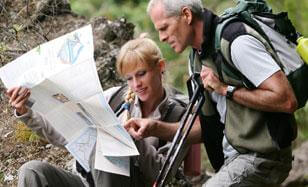
Walking the traditional routes of El Hierro
The peace that reigns in the south-west of El Hierro, home to Frontera Rural Park, makes walking along any one of the many different paths a real pleasure. The steep upward climbs found in many parts is more than compensated by the breath-taking views and the pure air you breath in along the way. Some of the walks are still used during traditional festivals such as the famous pilgrimage for the Descent of the Virgen de los Reyes, which now forms part of the GR-131.
To explore this network it’s best to begin at Hoya del Morcillo, a camping area in the middle of a Canarian pine forest beside the village of El Pinar. From there you can explore different sections of the PR-EH 1: one will take you to the fishing area of La Restinga, another leads you through the laurel forests of Mencáfete along the northern slopes of the park, and others take you along to the impressive gulfs of Las Playas and Frontera.
- Never leave waste of any type lying around, including cigarette butts. Leftover food leads to a proliferation of rats and wild cats, which pose a serious threat to the fauna.
- Respect the animals. Do not bother them or feed them. If you see an injured specimen, you can call the emergency number: 112. Do not pick flowers or plants.
- Do not pick up or take away stones or any other item from the natural environment. And do not move them to pile them up into sadly famous 'towers'.
- Do not walk in areas where it is not allowed and respect the signposting along trails. Leaving the set paths causes damage to the environment and could also be dangerous for you and anyone with you.
- Do not light fires outside the permitted areas and be especially careful during the summer months.
- Try not to alter the peace of the environment with excessive noise (loud music, yelling, etc.).


